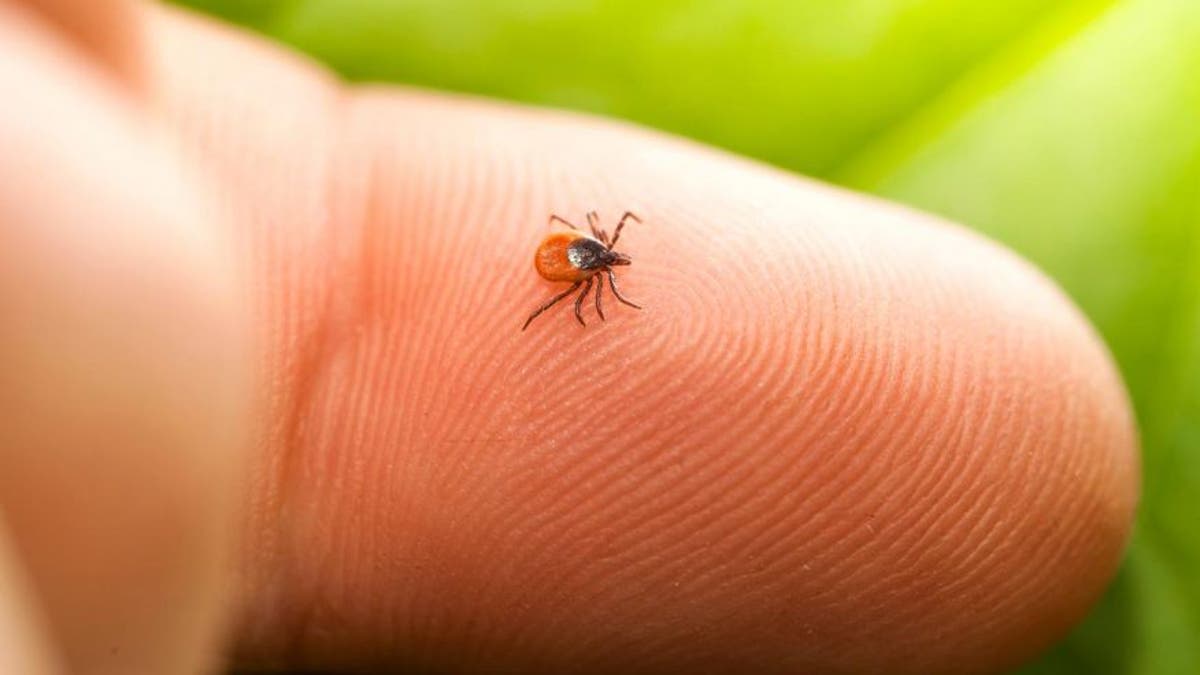
Here's how to get that sucker off safely and what to do next. (iStock)
Ticks and tick-borne illnesses are found all over the U.S., and you can use these maps provided by the Centers for Disease Control and Prevention (CDC) to see which ticks are found in your area. Different types of ticks carry different viral and bacterial illnesses, so it’s important to know which ticks are near you. There are seven varieties of ticks in the U.S. alone, and they carry at least 10 different viral and bacterial pathogens.
The tragic death of an Indianapolis toddler earlier this month, likely from a tick-borne disease called Rocky Mountain spotted fever, has focused public attention on the fact that tick-borne diseases are on the rise. In fact, there have been five tick-borne diseases identified for the first time in the U.S. since 2009. (No one’s really sure why new tick-borne diseases are showing up so quickly, but it could be connected to the overall increase in the identification of new diseases in the last several decades.)
One factor that’s increasing the rates of transmission of these diseases is the rising tick population. If have a yard or lawn, you may have noticed more ticks in recent years, and that’s a trend that’s being observed all over the country. Deer ticks, the carriers of Lyme disease, have been particularly plentiful.
One factor contributing to the increasing tick population is an increase in prey animal populations. Deer ticks feed primarily on deer and mice, populations that have been growing in recent years. One reason for this in the Northeastern US, where Lyme disease is most prevalent, is the lack of predators.
Larger predators that once hunted deer have been scarce for generations, and smaller predators that snack on mice like hawks, owls, and foxes have suffered from the loss of undisturbed forest habitats. Mice, on the other hand, are highly adaptable and live just as happily in abandoned structures and yards as they do in the forest. Any mouse that has been bitten by an infected tick then carries Lyme disease and spreads it to every new, uninfected tick that bites it.
HUMMUS RECALLED OVER POSSIBLE LISTERIA CONTAMINATION
Many researchers also believe that rising global temperatures are allowing ticks populations to move northward and expanding the tick feeding season. There have even been recommendations to change Lyme disease awareness month from May to April, since the deer tick feeding season seems to be moving into earlier months.
So, how do you stay safe?
Some tick-borne diseases are treatable, but prevention is the most effective response. Ticks won’t usually bite as soon as they come into contact with you, and if they can be removed before they’re embedded, they can’t make you sick. But even quick removal of an embedded tick can prevent some illnesses. For example, Lyme disease transmission can be prevented if a tick is removed within 24 hours.
AIR FORCE SAYS 135 PATIENTS POSSIBLY EXPOSED TO HIV, HEPATITIS
Most of us only remember to check ourselves for ticks if we’ve been hiking or visiting a state park, but experts recommend including a tick check in your daily routine if you live in a high risk area. Many tick bites occur after everyday activities like gardening or mowing the lawn. Favorite spots for ticks to bite include the groin area, under the arms, and behind the ears. The shower is a great place to check for ticks, and using a washcloth is usually enough to dislodge any that aren’t attached yet.
If you do remove an embedded tick, you can save it and get a good identification just in case you develop any unusual symptoms. Knowing which type of tick bit you can help doctors rule out specific diseases if you do get sick. If you see a doctor for symptoms like rash, fever, or headaches and know you’ve been bitten by a tick recently, always make sure to let your doctor know.
This article first appeared on AskDrManny.com.
